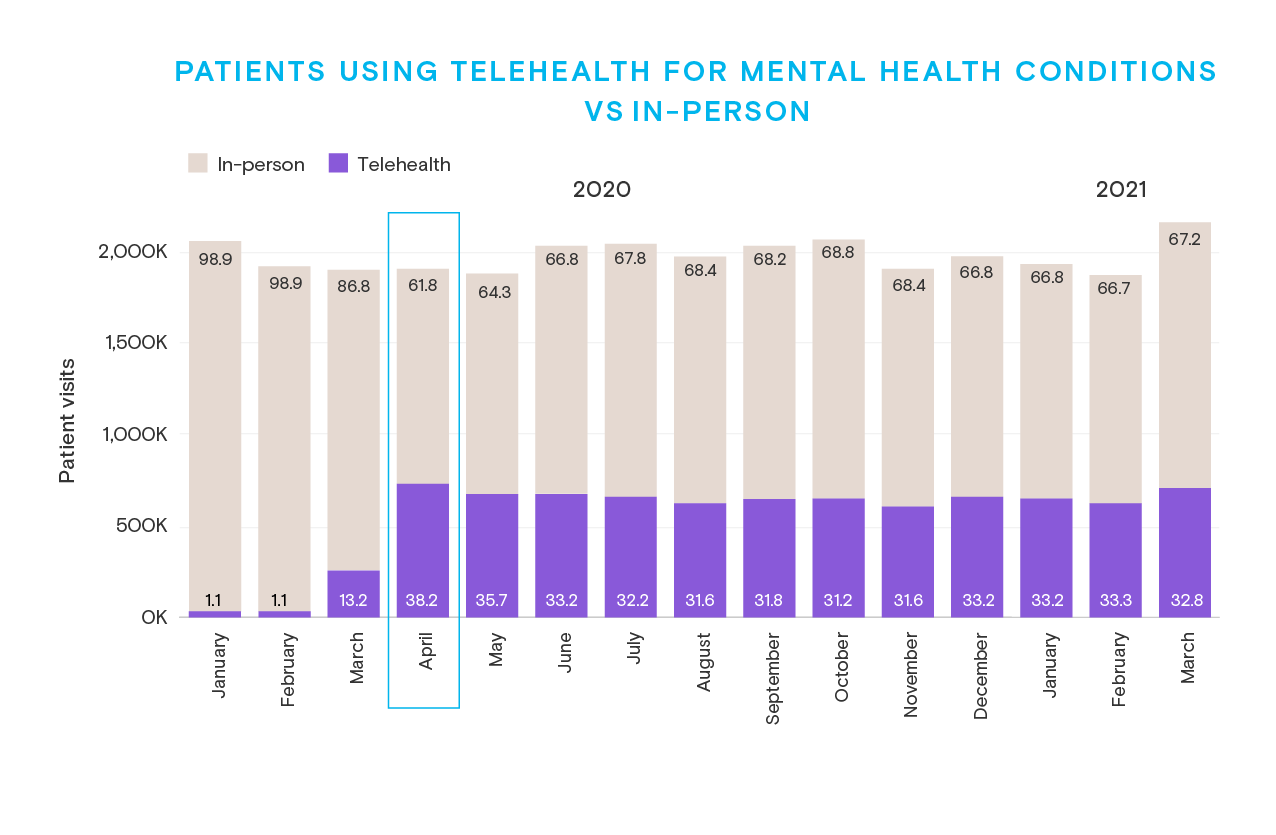Revolutionizing Healthcare: Pandemic-Driven Innovations

Revolutionizing Healthcare: The Rise of Pandemic-Driven Innovations
The ongoing global pandemic has sparked an unprecedented wave of innovation in the healthcare sector. From advanced medical technologies to groundbreaking treatment approaches, the industry has swiftly adapted to the challenges, leading to a transformative era in healthcare.
Technological Marvels Shaping Healthcare Landscape
Pandemic healthcare innovations have been significantly influenced by rapid advancements in technology. Telemedicine, once a convenient option, became a necessity during lockdowns. Virtual consultations, remote monitoring, and digital health platforms have not only ensured continuous patient care but have also opened new avenues for healthcare accessibility.
Data Analytics and Predictive Modeling for Pandemic Management
The integration of data analytics and predictive modeling has played a pivotal role in managing and mitigating the impact of the pandemic. These tools have enabled healthcare professionals to anticipate trends, allocate resources efficiently, and make informed decisions. Such innovations are invaluable in responding dynamically to the ever-evolving nature of the health crisis.
Vaccine Development at Unprecedented Speed
One of the most remarkable pandemic-driven innovations has been the accelerated development of vaccines. The collaborative efforts of pharmaceutical companies, researchers, and governments worldwide led to the creation of multiple effective vaccines in record time. This achievement not only showcased the power of global collaboration but also set new standards for vaccine development.
Robotics and Automation in Healthcare Delivery
To minimize physical contact and enhance efficiency, robotics and automation found their way into healthcare settings. From robot-assisted surgeries to automated disinfection processes, these innovations are not only ensuring safety but are also streamlining healthcare delivery, paving the way for a more technologically advanced future.
Personal Protective Equipment (PPE) Redefined
The demand for effective Personal Protective Equipment (PPE) prompted innovative solutions. Advanced materials, smart textiles, and ergonomic designs have transformed the conventional understanding of PPE. These innovations not only enhance protection for healthcare workers but also contribute to their comfort and overall well-being.
Remote Patient Monitoring for Chronic Conditions
With an increased focus on managing chronic conditions during the pandemic, remote patient monitoring has gained prominence. Wearable devices and IoT-enabled solutions allow healthcare providers to track patients’ vital signs and health parameters remotely. This not only ensures timely interventions but also empowers individuals to actively participate in their healthcare journey.
AI-Driven Diagnostics for Faster and Accurate Results
Artificial Intelligence (AI) has revolutionized diagnostic processes, offering faster and more accurate results. AI algorithms analyze medical images, interpret diagnostic tests, and even assist in drug discovery. These innovations not only expedite healthcare processes but also contribute to more precise and personalized treatment plans.
Virtual Reality (VR) in Therapeutic Interventions
Virtual Reality (VR) has found applications beyond gaming, proving to be a valuable tool in therapeutic interventions. From pain management to mental health treatments, VR is providing immersive experiences that aid in patient recovery. This innovative approach enhances patient outcomes and contributes to holistic healthcare practices.
The Future Landscape: Pandemic Healthcare Innovations
As we witness the profound impact of pandemic healthcare innovations, it’s evident that the healthcare landscape has undergone a seismic shift. To delve deeper into the transformative era of healthcare, explore Pandemic Healthcare Innovations. These innovations not only address the immediate challenges posed by the pandemic but are also shaping a future where healthcare is more accessible, efficient, and patient-centric.
Telehealth Triumph: A Pandemic Solution for Seamless Healthcare

Telehealth Triumph: A Pandemic Solution for Seamless Healthcare
The COVID-19 pandemic has undeniably reshaped the way we approach healthcare, pushing the boundaries of innovation and technology. One significant stride in adapting to the new normal has been the widespread adoption of telehealth services. This transformative approach has proven to be a game-changer, providing a seamless bridge between patients and healthcare providers.
The Rise of Telehealth during the Pandemic
Amidst the chaos and challenges brought on by the pandemic, the need for alternative healthcare delivery methods became more apparent than ever. Telehealth emerged as a beacon of hope, offering a safe and efficient means of accessing medical services while minimizing the risk of virus transmission.
Telehealth services encompass a range of virtual healthcare solutions, from video consultations with healthcare professionals to remote monitoring of vital signs. This shift in healthcare delivery has not only facilitated access to medical care but has also played a pivotal role in reducing the burden on overwhelmed healthcare systems.
Convenience and Accessibility Redefined
One of the primary advantages of telehealth services is the unprecedented level of convenience and accessibility they offer. Patients no longer need to endure long wait times or travel great distances to see a healthcare provider. With a simple click, they can connect with a healthcare professional from the comfort of their homes.
Telehealth has proven to be particularly beneficial for individuals living in remote or underserved areas, where access to healthcare facilities may be limited. This newfound accessibility has the potential to address healthcare disparities, ensuring that everyone, regardless of location, can receive timely and quality medical care.
Enhancing Continuity of Care
Telehealth services have played a crucial role in maintaining continuity of care during these challenging times. Patients with chronic conditions or those requiring regular check-ups can now receive the necessary medical attention without disruptions. This has been especially significant in preventing the deterioration of health conditions and reducing hospitalizations.
Healthcare providers can seamlessly monitor and manage patients’ health remotely, adjusting treatment plans as needed. The integration of technology into healthcare delivery has facilitated real-time communication between patients and healthcare professionals, fostering a collaborative approach to managing health and well-being.
Addressing Mental Health Challenges
The pandemic has not only taken a toll on physical health but has also exacerbated mental health challenges for many individuals. Telehealth services have become a lifeline for those seeking mental health support, offering a confidential and accessible platform for therapy sessions and counseling.
The ability to access mental health services remotely has removed barriers such as stigma and increased the likelihood that individuals will seek the help they need. The convenience of virtual mental health support has made it easier for people to prioritize their mental well-being in the midst of a global crisis.
Looking Towards the Future: Telehealth Services Pandemic
As we navigate through the ongoing challenges of the pandemic, the integration of telehealth services into mainstream healthcare appears to be a lasting and positive change. The adaptability and resilience demonstrated by the healthcare industry in embracing telehealth highlight its potential for long-term impact.
TheHealthyConsumer.com offers a comprehensive guide to understanding and utilizing telehealth services during the pandemic. From informative articles to user-friendly resources, the website serves as a valuable source of information for individuals seeking to make the most of virtual healthcare solutions.
In conclusion, the telehealth triumph during the pandemic has not only addressed immediate healthcare needs but has also paved the way for a more patient-centered and accessible healthcare system. As we continue to navigate the complexities of the evolving healthcare landscape, telehealth stands as a beacon of innovation, providing a bridge to quality healthcare for all.
Revolutionizing Healthcare: Telehealth Solutions Amid Pandemic

The Evolution of Healthcare: Telehealth Solutions Amid Pandemic Challenges
The COVID-19 pandemic has accelerated the adoption of telehealth solutions, revolutionizing the way healthcare services are delivered. As the world navigates through unprecedented challenges, telehealth has emerged as a critical tool, offering innovative solutions to ensure the continuity and accessibility of healthcare services.
Rise of Telehealth during the Pandemic:
The pandemic prompted a rapid shift towards telehealth solutions, driven by the need to provide medical care while minimizing in-person interactions. Telehealth encompasses a range of services, including virtual consultations, remote monitoring, and digital communication tools. This surge in telehealth adoption has not only addressed immediate concerns but has also set the stage for a transformative future in healthcare delivery.
Accessibility and Overcoming Geographic Barriers:
One of the key advantages of telehealth is its ability to overcome geographic barriers. Patients in remote or underserved areas can now access healthcare services without the need for extensive travel. Telehealth solutions have brought medical expertise to the fingertips of individuals, fostering a more inclusive and accessible healthcare system.
Virtual Consultations and Remote Monitoring:
Telehealth solutions have redefined the patient-doctor relationship with the widespread adoption of virtual consultations. Patients can seek medical advice, discuss symptoms, and receive prescriptions from the comfort of their homes. Remote monitoring tools enable healthcare professionals to track patients’ vital signs and chronic conditions, allowing for timely interventions and personalized care plans.
Enhanced Healthcare Efficiency:
The integration of telehealth solutions has streamlined healthcare processes, leading to increased efficiency. Digital health records, virtual appointments, and online prescription services have reduced administrative burdens, allowing healthcare providers to focus more on patient care. This efficiency not only benefits healthcare professionals but also contributes to a more responsive and patient-centric healthcare system.
Telehealth Solutions Pandemic: Transforming Patient Experience
To explore the transformative impact of telehealth solutions during the pandemic, visit Telehealth Solutions Pandemic for valuable insights and resources.
Technological Innovations in Telehealth:
Advancements in technology have played a crucial role in the evolution of telehealth solutions. The integration of artificial intelligence (AI), wearable devices, and telemedicine apps has enhanced the diagnostic capabilities and personalized treatment options. These technological innovations contribute to a more comprehensive and proactive approach to healthcare.
Challenges and Regulatory Considerations:
While telehealth solutions offer numerous benefits, they also come with challenges and regulatory considerations. Issues such as data security, licensure requirements, and reimbursement policies need careful attention. Addressing these challenges is essential to ensure the widespread and sustainable integration of telehealth into the broader healthcare landscape.
Patient Empowerment and Health Literacy:
Telehealth empowers patients by providing them with greater control over their healthcare journey. Increased health literacy, facilitated by access to information and virtual resources, enables individuals to make informed decisions about their well-being. Telehealth solutions contribute to a paradigm shift, where patients become active participants in their healthcare management.
Sustainable Healthcare for the Future:
As telehealth solutions continue to evolve, they are poised to become an integral part of the future healthcare landscape. The lessons learned during the pandemic highlight the importance of flexible and resilient healthcare systems. Telehealth is not just a temporary response to a crisis but a sustainable solution that can enhance healthcare accessibility, efficiency, and patient outcomes in the long run.
Conclusion:
The integration of telehealth solutions into mainstream healthcare practices marks a significant milestone in the evolution of medical services. From virtual consultations to technological innovations, telehealth has proven its ability to transform patient experiences, enhance healthcare efficiency, and contribute to a more accessible and patient-centric healthcare system. As the world embraces the future of healthcare, telehealth solutions stand as a beacon of innovation and resilience in the face of ongoing challenges.




(501).jpg)

